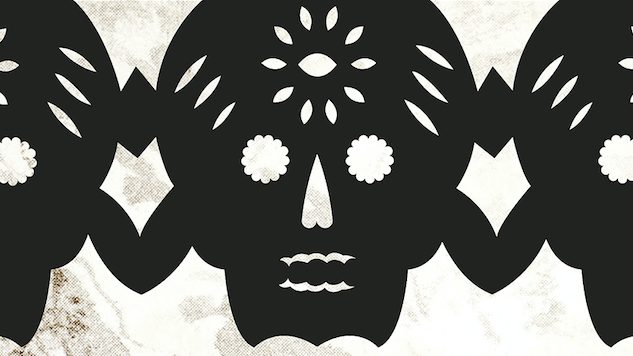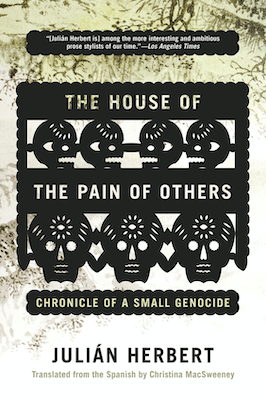We Need to Learn from the Genocide of Immigrants Chronicled in Julián Herbert’s New Book

No other self-aware creatures ignore obvious warning signs as often as humans do.
We blatantly disregard past damages in a self-serving effort to sate our vilest impulses—again and again and again. So I fear that The House of the Pain of Others, in which Julián Herbert chronicles the mass slaughter of hundreds of Chinese immigrants in Mexico, will be taken to heart only by those who seek to learn from history—a sermon delivered unto the choir.
The “small genocide”—Herbert’s words, as translated by Christina MacSweeney—in Torreón was the result of Mexico’s long-simmering Sinophobia. Many hated the country’s Chinese population for seemingly failing to integrate (they wore their hair in braids), not supporting the Mexican economy (they sent their earnings back home) and stealing jobs (they worked for lower salaries than nationals). So Sinophobia spread from the top down, race and money inevitably intertwined.
Sound familiar?
 May 13th through 15th, 1911: During the battle for Torreón during the Mexican Revolution, multiple bands of revolutionaries, called Maderistas, used the war as an excuse to commit crimes against humanity. Maderistas rounded up Torreón’s Chinese population and murdered them, robbing them of their dignity and savings with impunity. They spewed bullets into their chests and heads, butchered them with axes and machetes, ripped the shoes from their feet to steal the money within—soulless begetting soleless.
May 13th through 15th, 1911: During the battle for Torreón during the Mexican Revolution, multiple bands of revolutionaries, called Maderistas, used the war as an excuse to commit crimes against humanity. Maderistas rounded up Torreón’s Chinese population and murdered them, robbing them of their dignity and savings with impunity. They spewed bullets into their chests and heads, butchered them with axes and machetes, ripped the shoes from their feet to steal the money within—soulless begetting soleless.
The perpetrators couched their crimes in self-defense, blaming the Chinese for shooting at them—a demonstrated falsehood. The crimes also continued after the massacre, as Mexico began to spin a “national fiction” about the genocide. After an initial denial, the number of dead and magnitude of evil were regularly reduced, the value of their lives metaphorically and literally—in the form of renumeration to the Chinese government—depreciated. Mexican citizens, too, wrote their own chapters whipsawing their history with buck-passing—it was Pancho Villa, that villain…never mind he was far away—and sensationalizing the violence.
An official apology is still forthcoming.
What was Sinophobia in 1911 is now broad-spectrum xenophobia in 2019; it is the hatred of transgender people, the scapegoating of refugees, the demonization of immigrants and the villainization of Muslims. It is venom spewed by the most powerful people on the planet, a new generation of dumb and savage strongmen eager to dismantle our social scaffolding. No less a personage than the mouth inside the Oval Office calls forth this serpent from beneath the subtext sea.
The gunshots of Torreón echo in Oslo and Utøya, in Myanmar and Oak Creek and Christchurch.
We are busy writing our national fiction in real time, a task easier than ever as the internet disseminates voices and fosters echo chambers into which souls are dragged and tortured. Keystrokes are as dangerous as the rounds hanging like a predator’s tongue from arms no civilian needs. We are busy mitigating blame and minimizing guilt through wicked whataboutism—the Boxer Rebellion then, radical Islamic terrorism now—while refusing to name the beast.
But Herbert understands rhetoric’s power and uses it to expose a century-old atrocity. He refers to the massacred Chinese as Celestials, an antiquated but beautiful name which alludes to their human right to deification and their distance from the present. Herbert also equates even a “small genocide” with the snuffing out of stars, a cataclysm on par with the violent rending of the universe, because genocide is our highest human-on-human crime.
A century passes. The world turns. Herbert reaches out with history and art, beseeching us to not let these crimes go unheeded.
B. David Zarley is a freelance journalist, essayist and book/art critic based in Chicago. His work has appeared in The Verge, The Atlantic, Quartz, Hazlitt, VICE Sports, Chicago Magazine, Sports Illustrated, New American Paintings, the Myrtle Beach Sun News and numerous other publications.







































